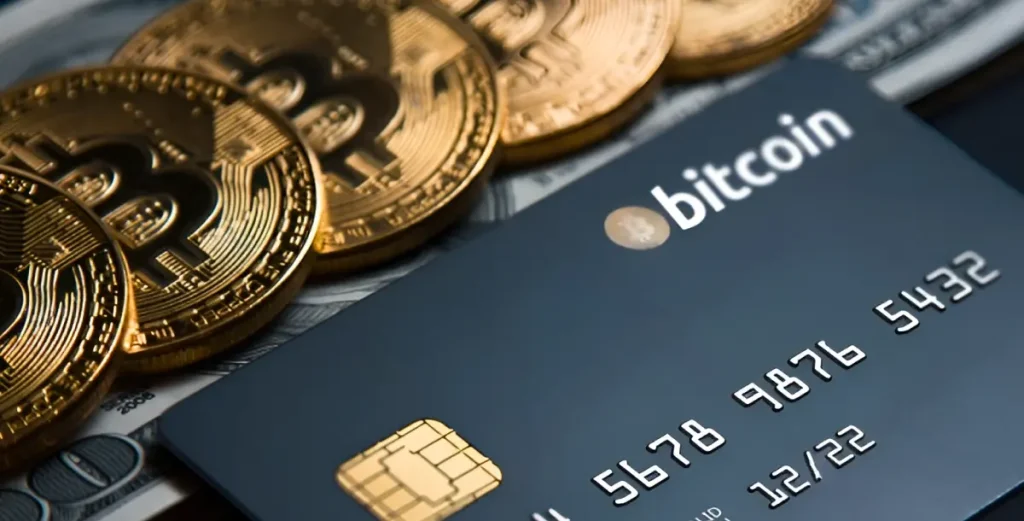Blockchain bridges let value and data move between otherwise separate chains. Blockchains are siloed by design, so assets and smart contracts on one network can’t “see” or directly talk to another.
A bridge sits in the middle: it watches Chain A, proves that a specific event really happened there (for example, a user locked 10 ETH in a bridge contract), and then triggers a matching action on Chain B (such as minting 10 wrapped ETH, updating a balance, or calling a smart contract).
Under the hood, bridges don’t teleport assets between chains. They typically lock or burn tokens on the source chain and mint or release corresponding tokens on the destination chain, so the total supply across chains stays in sync.
The “verification” step can rely on different mechanisms—trusted validators, multi-signature committees, or more trust-minimized light clients—but the idea is the same: once the bridge is convinced that something is final on Chain A, it has the authority to reflect that event on Chain B, whether that’s moving tokens, sending an NFT, or relaying a cross-chain message for a DeFi protocol.
For example, locking 10 USDC on Ethereum and minting a claim for 10 “bridged USDC” on Solana. Bridges underpin multi-chain apps, cross-chain swaps, rollup deposits/withdrawals, and interchain messaging.
What Problem Do Blockchain Bridges Actually Solve?
Web3 no longer lives on a single chain. Users hold assets on Ethereum mainnet, trade on rollups, mint NFTs on alternative L1s, and manage positions across app-chains.
Bridges provide the rails for this movement by letting crypto natives chase what each network does best. They move to rollups and sidechains for lower fees and faster confirmation times, shift to alternative L1s or app-chains to access specific DeFi protocols or NFT communities, and rebalance between ecosystems to capture yield, incentives, or new token listings.
Instead of parking everything on one chain and accepting its costs and limitations, they bridge to optimise execution costs, diversify risk, and plug into specialised products—derivatives on one chain, lending on another, gaming or NFTs on a third.
In practice, bridges turn a collection of separate blockchains into a portfolio of connected environments that users can route through based on fees, liquidity, and opportunity.
Without bridges, every chain becomes its own small pond. The same token might trade at slightly different prices on different networks, with thinner order books and higher slippage for simple buy/sell trades.
Bridges let users move assets to where liquidity, fees, and opportunities are better—so instead of overpaying on one chain, you can bridge to a network where the same stablecoin or token trades deeper and cheaper.
Even the most “vanilla” path that many users already follow—depositing funds from Ethereum mainnet into an Ethereum Layer 2 like Arbitrum, Base, or Optimism—is a form of bridging. You lock assets on mainnet and receive the same tokens on Layer 2 so you can trade, swap, or provide liquidity with lower gas fees.
Later, you withdraw back to mainnet through the same canonical (official) bridge. From a user’s point of view it feels like a transfer, but under the hood it’s the bridge that keeps your balances aligned across chains and makes simple actions like buying and selling on cheaper networks possible.
How Blockchain Bridges Work
Blockchain bridges move value or messages from one network to another without moving the original coins themselves.
At a high level, a bridge must do two things: prove that a final event happened on the source chain (a deposit, a state change, or a message) and then execute the corresponding action on the destination chain (mint, release, or process that message).
Everything else—speed, cost, and security—follows from how the bridge supplies that proof and who you trust to validate it.
Most bridges implement one of a few patterns. Lock-and-mint bridges like Wormhole or Multichain escrow assets on the source chain and mint wrapped versions on the destination.
Canonical rollup bridges such as the official Ethereum–Arbitrum, Ethereum–Optimism, or Ethereum–Base bridges rely on the rollup’s own smart contracts and proof system to move ETH and tokens between L1 and L2.
Liquidity-network bridges like Hop, Stargate, and Across use pools of capital on each chain so users can swap between networks instantly while the bridge rebalances in the background.
More advanced light-client or IBC-style bridges, including Cosmos IBC and projects like Axelar, embed on-chain verification of the other chain’s state so they don’t have to trust a single multisig or committee.
1) Lock-and-mint / burn-and-release (custodial or multisig)
Assets on the origin chain are escrowed by a contract controlled by an operator or multisig. A corresponding “wrapped” asset mints on the destination chain.
When users go back, the wrapped asset is burned and the escrow releases the original. Simpler and fast, but security depends on the operator set. High-profile incidents show this model’s risk if keys or verification logic fail.
2) Liquidity networks (no wrapping)
Instead of minting a representation, market makers pre-position liquidity across chains. Your USDC on Chain A is paid out from a pool on Chain B, then the network settles later. Speed is high; risk shifts to the network’s solvency and routing guarantees.
3) Light-client / client-verified bridges (trust-minimized)
The destination chain runs a (succinct) client of the origin chain and verifies finality proofs on-chain. Cosmos IBC is the best-known production example: chains verify each other via light clients and pass packets over a standardized transport layer (ICS standards like ICS-20 for fungible tokens). Security rests on the chains’ consensus, not an external multisig.
4) Optimistic bridges (fraud-proof window)
Messages are assumed valid unless challenged within a time window. If a relayer submits a bad message, a watcher can prove fraud to slash the relayer and cancel the transfer. This reduces on-chain verification cost at the expense of delay.
5) Zero-knowledge bridges (zk proofs)
The bridge submits a succinct proof that a specific state or event is valid on the origin chain. ZK verification can offer strong guarantees with faster finality than optimistic designs as systems mature.
6) Cross-chain messaging layers
Cross-chain messaging layers let apps send any instruction across chains, not just “move this token.” Frameworks like LayerZero relay arbitrary messages using independent oracle/relayer pathways and app-level validation.
A dApp can use that message to mint or burn tokens (as with Stargate), update a user’s position on a different chain, trigger a loan repayment, or sync an NFT state across networks.
The key idea: the bridge doesn’t just mirror balances; it carries intent. An app on Chain A can say, “User X deposited here, update their balance and rewards on Chain B” in one coordinated flow. That unlocks cross-chain DEXs, unified lending markets, and omnichain NFTs that behave consistently across ecosystems.
Security depends on how each application configures those paths—who runs the oracle and relayer, whether they’re decentralized, and what extra checks (like multi-endpoint validation or rate limits) the app enforces.
When done well, cross-chain messaging gives developers fine-grained control over trust assumptions and recovery plans. When done poorly, a compromised oracle or relayer can impact multiple chains at once.
Why These 6 Bridging Models Matter For You
These six patterns aren’t just architecture diagrams; they explain the trade-offs you feel as a user or builder:
Trust model
Lock-and-mint bridges and some messaging layers rely on committees or multisigs. Canonical rollup bridges lean on rollup security. Light-client and IBC-style bridges verify the other chain on-chain and reduce trust in off-chain actors. Knowing the pattern tells you who you’re really trusting.
Speed, fees, and UX
Liquidity-network bridges and messaging layers usually offer instant or near-instant moves by fronting liquidity and settling in the background, but they add protocol risk. Canonical bridges can be slower (withdrawal delays, challenge periods) but more tightly coupled to base-chain security. That’s why the same “bridge to L2” action can feel fast on one UI and slow on another.
Failure modes
Lock-and-mint bridges concentrate risk in the contract or multisig that holds the locked assets. Liquidity networks risk pool insolvency or mispricing. Messaging layers risk oracle/relayer compromise. Light-client bridges are harder to attack but more complex and sometimes more expensive. Recognising the pattern helps you evaluate “What actually breaks if this goes wrong?”
Composability and features
Simple lock-and-mint bridges focus on tokens. Messaging layers and IBC-style bridges support richer cross-chain apps—omnichain lending, NFT games, unified governance, etc. If you’re a builder, the pattern you pick determines how ambitious your cross-chain UX can be.
Regulatory and operational fit
Institutions often choose canonical or more trust-minimized bridges for critical flows and may restrict use of purely committee-based bridges. Understanding the model lets compliance and risk teams set sensible policies (for example, “only canonical bridges for client funds; liquidity bridges for internal rebalancing with limits”).
For a retail user who mostly buys and sells, the benefit is practical: when you know what kind of bridge you’re using, you understand why fees look the way they do, why some routes feel instant while others take minutes or hours, and where the main risk sits.
For teams designing products or treasury workflows, these categories become a checklist to match each bridge pattern to the level of trust, speed, and flexibility they actually need.
Security on Blockchain Bridges: What Actually Fails
Bridges concentrate risk. Most losses in DeFi’s largest exploits came from bridge weaknesses: signature compromise, verification bugs, and insecure upgrade paths. These were not “blockchain broken” events but bridge trust-model failures.
Vitalik Buterin’s 2022 post highlights why cross-chain systems have inherent additional risk: an attack on one chain can undermine assets bridged to others. This is why trust-minimized designs or canonical routes are preferred for high value.
You need to care about bridge security because a single exploit can wipe out the value of wrapped assets you hold, drain liquidity from the pools you trade in, and freeze positions you thought were “safe.”
For individuals, that can mean permanent loss of funds. For teams, it can trigger treasury losses, user compensation claims, and regulatory scrutiny. The more value you send across chains, the more the bridge becomes part of your actual risk surface—not just a UX detail.
A simple due-diligence checklist helps you choose safer routes:
- Trust assumptions. Who can move funds? Multisig? Validators? Light client?
- Verification. On-chain proof, optimistic window, or off-chain attestations?
- Upgrades & admin. Can an owner upgrade the contract without delay? Are timelocks and multisigs in place?
- Monitoring & response. Public dashboards, alerting, pause/kill-switch process, incident playbooks.
- Audits & bounties. Recent, reputable audits and active bounty programs.
You don’t need to become a bridge engineer, but knowing these points lets you draw a simple line: use the most trust-minimized, well-governed route for size, and reserve experimental or convenience bridges for small, acceptable-risk transfers.
Fees, Speed, and UX of Blockchain Bridges
Every cross-chain move is a three-way trade between cost, speed, and safety. Fees combine gas on both chains with the bridge’s own fee or spread.
Speed depends on how the bridge proves your transaction and on each chain’s finality. User experience comes down to clear status, minimal approvals, predictable token formats, and solid recovery if something stalls.
Keep those basics in mind and you can judge any bridge by four checks: total cost, time until funds are usable, what exact token you’ll receive, and how failures are handled.
- Fees include origin/destination gas plus bridge protocol fees and, for liquidity bridges, route spreads.
- Finality is the timer on when your bridge transfer is truly done. Different bridges and chains handle it differently: light-client and zk-based bridges can confirm quickly once the origin chain is final, while optimistic routes wait out a challenge window before things are fully settled. Knowing this helps you understand why some withdrawals are instant and others take days, and when it’s safe to treat bridged funds as “locked in.”
- Good UX hides most of that complexity. When wallets and dApps choose routes for you and default to canonical or well-audited bridges (especially for L2 deposits and withdrawals), users don’t have to compare trust models and security docs every time they move funds. That reduces mistakes, steers less technical users toward safer options, and makes cross-chain activity feel like a simple transfer instead of a risky, technical choice.
Choosing the Right Blockchain Bridge
Before you move assets cross-chain, frame the decision like an engineering trade-off. With that context, you can judge bridges on the things that actually matter: security model and trust assumptions, finality time, token outcome, total cost, and recovery if something goes wrong.
- Moving sizeable funds to/from an Ethereum rollup → prefer the canonical bridge unless you need faster but trust-heavier exits.
- Moving between Cosmos chains → use IBC-enabled transfers inside your wallet or dApp; confirm channels and client status.
- Moving between heterogeneous ecosystems (e.g., Ethereum ↔ Solana) → weigh security model vs. speed. If using a third-party bridge, verify audits, admin controls, and TVL/track record; consider splitting transfers.
- Building a cross-chain app → design for minimal trust (client-verified where possible), clear upgrade safety (timelocks, multisig), and monitored routes; avoid custodial chokepoints.
Frequently Asked Questions About Blockchain Bridges
Are Bridges the Same as “Wrapped Tokens”?
Not always. Wrapped tokens are the output of a lock-and-mint design, where the original asset is locked on the source chain and a synthetic version is minted on the destination chain. Some bridges never create wrappers.
Liquidity network bridges pay out from pre-positioned inventories on the destination chain, then reconcile later. Message-passing bridges send verified messages that trigger native actions on the destination chain, such as releasing a native asset from escrow.
Is IBC a Blockchain Bridge?
Inter-Blockchain Communication, or IBC, is a standard for secure messaging between chains that use light clients and agreed packet formats. Many Cosmos-ecosystem applications use IBC to move tokens and to control accounts on other chains.
Why Do Experts Warn About Cross-Chain Risk?
Cross-chain assets can inherit the weakest link in the route. If an attacker compromises validators, multisig signers, light clients, or an oracle on the source route, the representation on the destination chain can become invalid or unbacked. Risk also grows with long routes, complex dependencies, and illiquid wrappers.
Build Safer Cross-Chain Products by Design
Bridges connect today’s multi-chain world, but their security models differ dramatically. Canonical or client-verified designs reduce reliance on trusted operators and have the best track records. Whenever you choose speed or convenience, understand the additional trust you are taking.
Building for users across L1s, L2s, and sidechains? ChainUp’s bridge-friendly infrastructure integrates with canonical L2 routes and major third-party bridges, providing a unified platform to manage cross-chain deposits, withdrawals, and balances.
You retain full control over which routes to support in your product, while our infrastructure provides the reliable rails that keep these cross-chain connections secure and operational.




